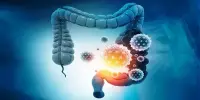A multinational team of marine biologists uncovered ancient RNA virus remains trapped in the DNA of symbiotic species living inside reef-building corals.
The RNA fragments came from viruses that infected the symbionts 160 million years ago. The discovery is presented in an open-access paper published this week in the journal Communications Biology, and it could help scientists understand how corals and their partners battle viral infections today. However, the discovery was surprising because most RNA viruses are not known to embed themselves in the DNA of the creatures they infect.
Endogenous viral elements, or EVEs, were discovered to be abundant in the genomes of coral symbionts. Dinoflagellates are single-celled algae that reside inside corals and give them their vibrant colors. The EVE discovery supports recent findings that viruses other than retroviruses can integrate bits of their genetic code into the genomes of their hosts.
“So how did it get in there?” wondered Rice University study co-author Adrienne Correa. “It could be an accident, but people are beginning to discover that these ‘accidents’ are more common than scientists previously thought, and they’ve been found across all kinds of hosts, from bats to ants to plants to algae.”
It was equally surprising to find an RNA virus in coral symbionts.
“This is what made this project so interesting to me,” said study lead author Alex Veglia, a graduate student in Correa’s research group. “There’s really no reason, based on what we know, for this virus to be in the symbionts’ genome.”
The study was led by Correa, Veglia, and two scientists from Oregon State University, postdoctoral scholar Kalia Bistolas and marine ecologist Rebecca Vega Thurber. The research provides clues that can help scientists better understand the ecological and economic impact of viruses on reef health.
EVEs from RNA viruses were not found in filtered seawater samples or the genomes of dinoflagellate-free stony corals, hydro corals, or jellyfish. However, EVEs were found in coral symbionts collected from dozens of coral reef sites, indicating that the pathogenic viruses were (and probably still are) choosy about their host hosts.
“There’s a huge diversity of viruses on the planet,” says Correa, an assistant professor of biosciences. “We know a lot about some of them, but most viruses haven’t been characterized.” We may be able to detect them, but we don’t know who hosts them.”
She explained that viruses, including retroviruses, can multiply in a variety of ways by infecting hosts. “One of the cool things about our study is that this RNA virus is not a retrovirus,” Correa explained. “You wouldn’t expect it to integrate into host DNA given that.”
“We’ve seen a lot of viruses in coral colonies for a long time, but it’s been difficult to tell what they were infecting,” Correa said. “As a result, this is most likely the best and most concrete information we have for the actual host of a coral colony-associated virus.” Now we can ask why the symbiont retains that DNA or a portion of the genome. “How come it wasn’t lost a long time ago?”
The fact that the EVEs have been conserved for millions of years suggests that they may be helpful to coral symbionts and that there is some form of mechanism driving the EVEs’ genomic integration.
“There are a lot of avenues we can pursue next, such as whether these elements are being used for antiviral mechanisms within dinoflagellates, and how they are likely to affect reef health, especially as oceans warm,” Veglia added.
“Is it more likely that Symbiodiniaceae species will contain this endogenous viral element if the temperature of seawater rises?” “Does having EVEs in their genomes improve their chances of surviving infections from modern RNA viruses?” he asked.
“In another paper, we demonstrated that thermal stress increased RNA viral infections in corals.” As a result, there are several moving pieces. And this is yet another useful piece of the puzzle.”
“We can’t assume that this virus has a negative effect,” Correa added. However, it appears to be getting more prolific under these temperature stress settings.”















